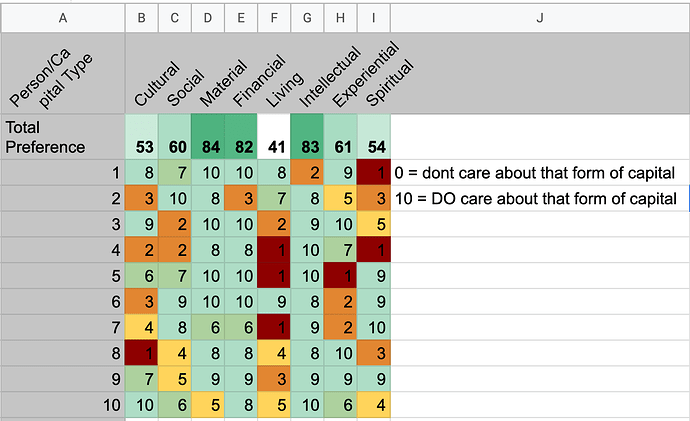One thing I think would be interesting to discover in the data of a hypothetical Effective Altruist Grants experiment would be to map the the preferences of communities utilizing that Grants program across multiple different types of capital.
For example, one could imagine a world in which blockchain-based grants programs optimize for Financial & Intellectual capital, but never meaningfully have a positive impact on other vectors.
(X axis: the preferences of 10 people, Y axis: the 8 forms of capital
each cell is how much person X cares about Y form of capital.
all data is random + for demonstration purposes only)
Personally I’d rather live in a world where the consensus of at least some of our grants programs is on creating positive impact on Material Capital (causes like climate change + biodiversity loss are deeply disheartening to me.
A world where the community preferences look a bit more like this would give me more comfort.
If we chop off the individaul preferences, and just look at the aggregated preferences:
Here are a few more randomly generate preference maps. I invite you to ponder what the communities underneath them would be like:







